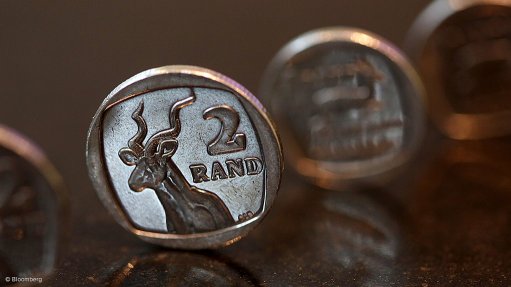Steenhuisen questions govt’s slow progress in dealing with loadshedding
Political party the Democratic Alliance (DA) federal leader John Steenhuisen has written a letter to President Cyril Ramaphosa, asking why his government refuses to implement the obvious solutions to the electricity crisis that have been proposed for years.
This comes as the country is again experiencing Stage 6 loadshedding and follows what has been exponential loadshedding growth from 141 hours (six days) in 2018 to 3 776 hours (157 days) in 2022.
Steenhuisen says the electricity crisis cost South Africa R560-billion in lost productivity last year, which translates directly into more poverty, unemployment, inequality and crime.
He cites some of the obvious solutions to South Africa’s energy crisis as being the unbundling of Eskom into three separate entities, which is a process that has been dragging for years, and to open the market for electricity generation to private power producers.
The DA, along with other organisations, has also long recommended that Eskom appoint skilled engineers to run the transmission, distribution and generation elements of Eskom, and stop all political interference in this regard.
Steenhuisen deems it necessary that the President declare a ring-fenced State of Disaster to exempt Eskom from all obstacles to efficient spending and rapid decision-making, such as localisation and black economic empowerment legislation.
Further, the DA leader recommends a ramp-up in security at all key Eskom sites to deal decisively with saboteurs, and that the entity does everything possible to enable private generation to come online soonest.
However, Steenhuisen says instead of implementing solutions, Ramaphosa’s first act in his second term as African National Congress (ANC) president was to announce the move of Eskom from the Ministry of Public Enterprises to the Ministry of Energy, under Energy and Mineral Resources Minister Gwede Mantashe’s stewardship.
Steenhuisen asserts that the electricity crises will only get worse.
He advises all households and businesses in South Africa to do everything they can to shield themselves from loadshedding, since Eskom is “in a death spiral and government’s vast patronage network benefits hugely from this status quo”.
Conversely, in areas where the DA governs, such as Cape Town, the city’s residents and businesses have often been shielded from one or two stages of loadshedding thanks to its Steenbras hydroelectric pumped storage system.
Cape Town also has a fully budgeted four-year programme to shield residents entirely from up to four stages of loadshedding. Additionally, the city has implemented a first round of the bidding process for independent power producers for a total capacity of 300 MW to come online from 2026.
A second round of 500 MW will go to market in three weeks’ time, which will also come online from 2026.
To complement this programme, the city has implemented a programme of buying surplus solar-generated electricity from commercial entities, so as to encourage businesses to install rooftop solar panels.
Moreover, Cape Town is the only city to have implemented a wheeling power pilot, in which a number of private entities sell power they have generated to third parties using the city distribution system, for a small fee.
Steenhuisen highlights that more than 90% of the Western Cape’s municipalities allow small-scale renewable energy to feed into the grid, while 20 municipalities compensate households or businesses that feed excess energy back into the network.
In Gauteng, the DA has helped that the City of Johannesburg allocate 30% of its R70-billion budget towards boosting City Power, and the City of Ekurhuleni has approved 47 IPPs to the grid, to help offset the impact of loadshedding.
Article Enquiry
Email Article
Save Article
Feedback
To advertise email advertising@creamermedia.co.za or click here
Comments
Press Office
Announcements
What's On
Subscribe to improve your user experience...
Option 1 (equivalent of R125 a month):
Receive a weekly copy of Creamer Media's Engineering News & Mining Weekly magazine
(print copy for those in South Africa and e-magazine for those outside of South Africa)
Receive daily email newsletters
Access to full search results
Access archive of magazine back copies
Access to Projects in Progress
Access to ONE Research Report of your choice in PDF format
Option 2 (equivalent of R375 a month):
All benefits from Option 1
PLUS
Access to Creamer Media's Research Channel Africa for ALL Research Reports, in PDF format, on various industrial and mining sectors
including Electricity; Water; Energy Transition; Hydrogen; Roads, Rail and Ports; Coal; Gold; Platinum; Battery Metals; etc.
Already a subscriber?
Forgotten your password?
Receive weekly copy of Creamer Media's Engineering News & Mining Weekly magazine (print copy for those in South Africa and e-magazine for those outside of South Africa)
➕
Recieve daily email newsletters
➕
Access to full search results
➕
Access archive of magazine back copies
➕
Access to Projects in Progress
➕
Access to ONE Research Report of your choice in PDF format
RESEARCH CHANNEL AFRICA
R4500 (equivalent of R375 a month)
SUBSCRIBEAll benefits from Option 1
➕
Access to Creamer Media's Research Channel Africa for ALL Research Reports on various industrial and mining sectors, in PDF format, including on:
Electricity
➕
Water
➕
Energy Transition
➕
Hydrogen
➕
Roads, Rail and Ports
➕
Coal
➕
Gold
➕
Platinum
➕
Battery Metals
➕
etc.
Receive all benefits from Option 1 or Option 2 delivered to numerous people at your company
➕
Multiple User names and Passwords for simultaneous log-ins
➕
Intranet integration access to all in your organisation


















